Drawing is the fundamental skill behind keeping a sketchbook, visualizing your thoughts and making a great painting. Having well-practiced drawing skills will help you immensely when you’re trying to express yourself artistically. So learning to draw is the best gift you can give to yourself as an artist. Here are some tips to help you get better at drawing.
View the video version of this post (with a nice drawing demo):
How to get better at drawing | 5 top tips + a pep talk
Draw A Lot
It might come as a surprise to some, but in order to become good at something, you have to do it. A lot. Preferably every day. This method will work for any skill, it’s just the way the brain works: if you offer it more of a thing, it will build nerve paths to respond more quickly to that thing in the future. You are reshaping your brain with every drawing you make, and you will learn something, even if it doesn’t look like it right now. When you look back, you will be able to see this. You will become better simply by drawing a lot.
Draw A Lot (yes really!) – With Deliberate Practice
I mean this. You have to show up to practice, preferably every day, and you will see results. You will amaze yourself. You will be even more amazed when you practice in a certain way: deliberately.
Deliberate Practice works like this: you take all your drawings, assess them, and you will immediately see what you’re not good at yet. You will be able to see it, because your mind is always a few steps ahead of your hand. You know what kind of art you like, right? And you know what kind of drawing skills you would like to have. But you’re not there yet. So you can differentiate between different skill levels. Take another look at your drawings. What are your most struggling with? Note this and practice it deliberately. You will see that you will become better at this one thing just by focusing on it. Also be mindful and deliberate about your technique. Assess your bad drawing habits. If you’re not aware of your bad habits, you will only cement them. Take advice from another person if you don’t notice them yourself. So if you’re too hasty, slow down. You won’t reach the next level (better drawing skills) by rushing through every drawing. You need to take your time and reflect what you’re doing. Yes, gestural and quick drawing has its place, but it’s not a replacement for accurate observation and taking your time to draw what you see on the page. Look at your lines. Look back and forth and compare the two, again and again. Study the shape, the values, the contrast, the texture, the perspective of the object you’re drawing.
By the way, this is something I wrote for myself. I’ve been very impatient with my drawing skills for years, and I’ve only seen considerable changes when I finally allowed myself to slow down, and do the hard work. Drawing is as much about observing as it is about making a line. You need to take your time for this. Halfway through the learning process it became less hard and actually started to be fun, and now I’m slowly introducing hard things again – like drawing animals I find hard to draw, or drawing the human figure. That means stretching my drawing muscles a little bit. If the feeling is that I want to quit what I’m doing after each sketch, then I’m on the right track.
Keep these small practice sessions easy to commit to, and don’t pressure yourself into challenges you know you will fail at, particularly those on social media that emphasize comparison over learning. As soon as the platform has a social approval system I find it’s not good for these kind of learning experiences. I prefer looking back at my own work after a few weeks or months to see how I’ve improved, or to do an intense class in which I can get feedback from somehow who knows his stuff.

Build A Drawing Habit
Once you have discovered that you actually can do this (by the way: I think that anybody can learn to draw if they practice, it’s just a manual skill), don’t stop there. You need to stay active in order to exercise your brain, and your hand. This new skill will gradually disappear and you will have to train yourself all over again. Making drawing a regular habit is one of the best things you can do if you want to keep getting better, or even if you just want to stay at the skill level you are.
Get A Sketchbook
The best way to keep a drawing habit active is to keep a sketchbook. This can be a nature journal, or any kind of art journal, sketchbook where you can practice your drawing in a playful and low-pressure way. So get yourself a sketchbook and fill it with drawings. You don’t have to make finished art in it, this is why it is called a sketchbook. But with daily drawing and continuous work you might see that a pattern will emerge (maybe a style, or a certain topic), and you will get ideas for other art pieces that way. I found out only by keeping a sketchbook that I love to draw (and paint) birds, and animals, and, to a certain extent, even human heads. I wouldn’t have known if I hadn’t tried.
5 Tips To Get Better At Drawing Immediately
Here are my top five tips to get better at drawing nature (or anything, really) immediately:
Pencil Control
The first thing you’ll have to learn is what kind of marks you can get out of your drawing tool. Practice making different kinds of marks, and practice straight lines, curves and organic shapes like ellipses – you will need these in every drawing.
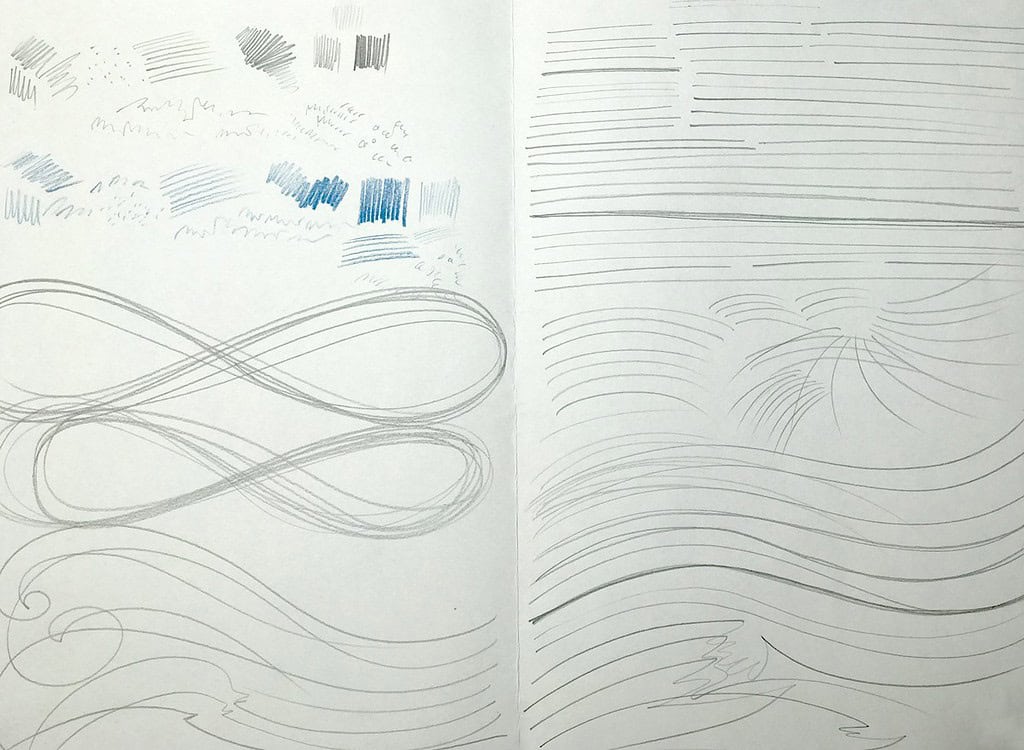
Take your time and pay close attention
This is something that most beginners (including me when I started out) overlook. For an accurate drawing, you really need to observe your subject. Don’t just rush through your drawing. Don’t just draw what you think something looks like, or what an idealized version of it looks like. Really take notice of every detail, angle, structure and form. This can mean you will draw really slowly in the beginning, because you will have to look back and forth between your paper and your subject a lot. This is fine, and things will speed up when you’re accustomed to this process. If you only look at what you’re drawing once, you will not learn to capture details correctly. Practice this skill with a very detailed object like a pine cone. If you feel like you’re lost every time you look up from your paper, keep at it. This will improve when your brain learns how to continue at the last point of reference. Of course, this is not a hard and fast rule. You might only have a moment to look at something before it moves (like birds, or clouds). To modify this rule, only look at your object once, but for as long as you can. Describe the major shapes and lines in your head (or actually say them out loud). Then look away and draw it as precisely as you can.
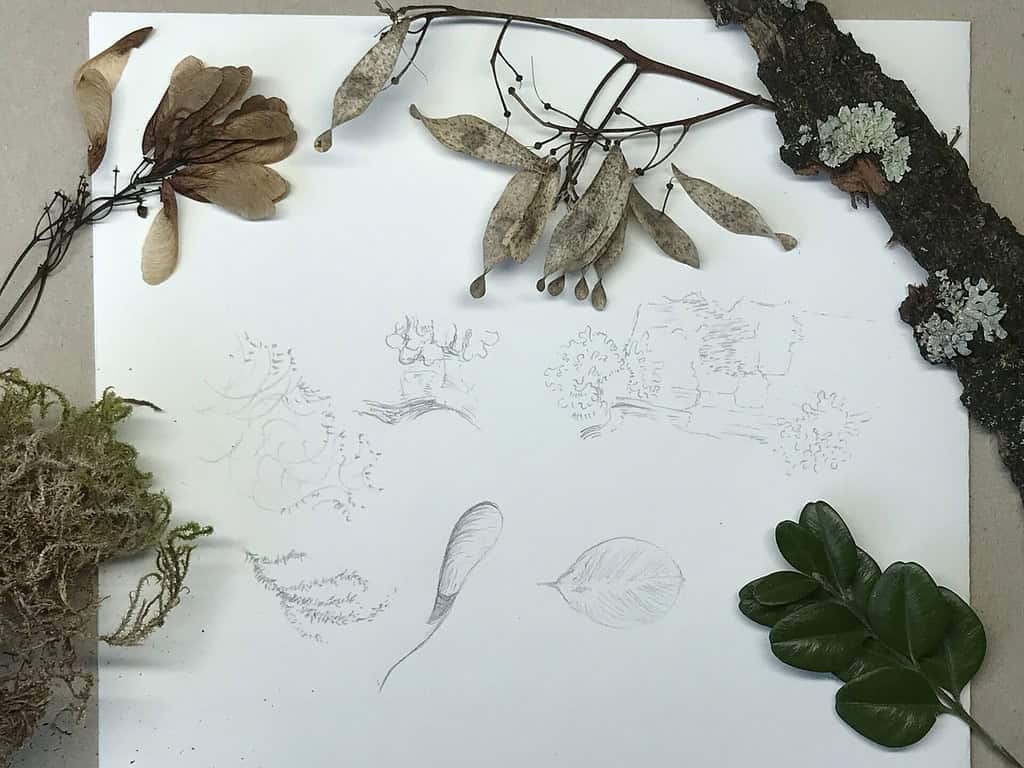
Shapes vs forms
One central concept that I demonstrate in the video How to create three dimensional realistic drawings is that you can use three dimensional forms instead of flat shapes to describe an object on the page. This has transformed the way I think about drawing. Since paper is a flat surface, but reality is three-dimensional, you will need a method to give an object a three-dimensional form. Describing what you draw with flat geometric shapes (circle, triangle, rectangle) is a good starting point, but this constructional approach will make your drawings seem more realistic and life-like. Give it a try.
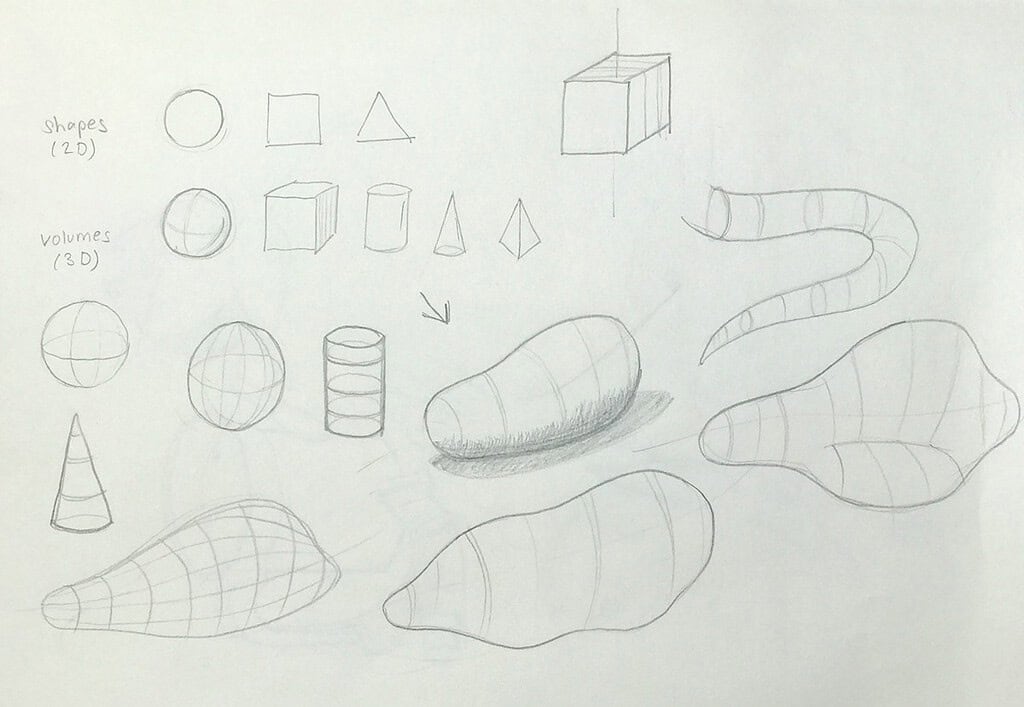
Start Loose, Finish With Detail
Start with the basic shapes of an object and sketch it lightly. Indicate edges, creases or curves. You can exaggerate the edges slightly in your first sketch, you will soften them anyway in a later stage. Don’t start working on the details until you have all the major shapes looking right: that means roughly the right size, angle and relation to each other. Think of your object as different shapes combined to a big form. If the basic shapes look wrong, change them now as long as you’re in this loose stage. You can’t do it later when you’ve already added some details.
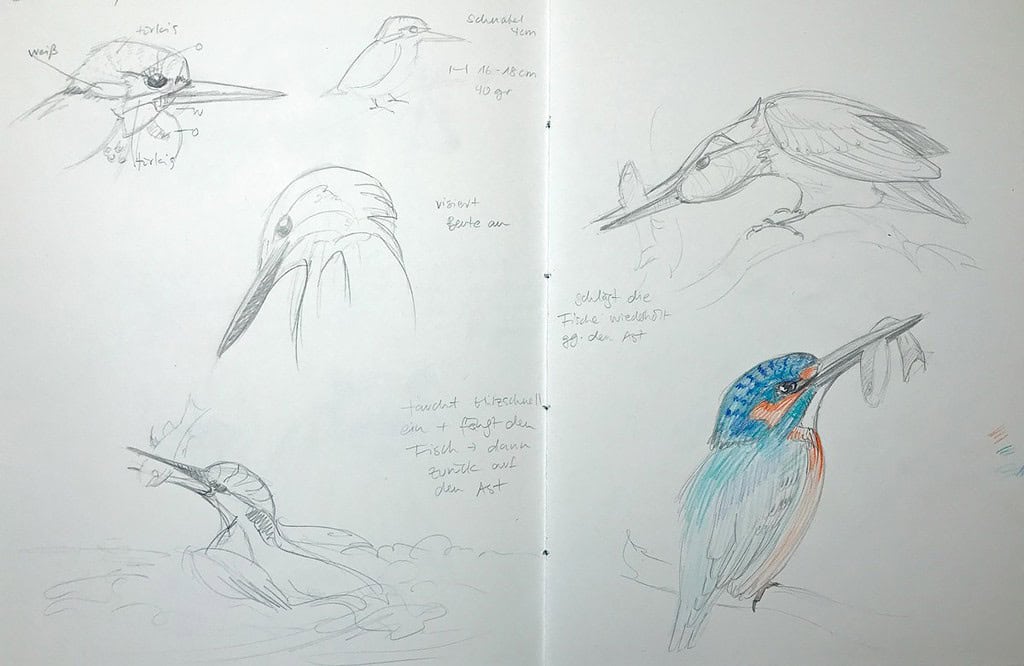
Keep Practicing
I know I’ve already said it and you’re probably getting tired of hearing it. But it’s truly the most important tip. In order to get better at drawing you have to be drawing. It doesn’t help to read more articles, or to watch more videos, you need to get in some pencil miles. Any approach is great, although paying special attention to the things I mentioned above is especially helpful.
Of course, principles like proportion, perspective, contrast and values are also important to create a good drawing. I have included all of these essential concepts in my class Sketching Fundamentals, but I also give special consideration to the points above – I find they are often neglected when people learn to draw, and they can really make a difference, especially thinking about forms instead of shapes, and really taking your time to observe.
I hope this was a helpful list for you. What are you struggling with in your drawings, what would be most helpful for you? Let’s discuss below!



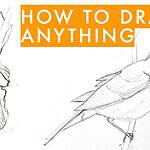
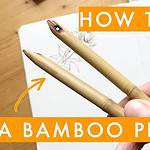
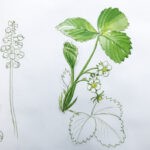
Julia, thanks for the article. I always appreciate your articles, so helpful and love the illustrations. I have started the course, then life (work, ill husband, etc) intervened, and I have gone 3 weeks with no practice. Wish you could do a class on how to control all those life events. (lol). Seriously, this was a great nudge to get me back to the class and to practicing daily.
I know how life stuff can get in the way of the things we have planned, too – it happens so often (so I probably would be very bad at that class, lol). But seriously, I hope your husband will get better soon, and that you will find some time for yourself and your creativity again.
These were very helpful tips. It was inspiring to watch you draw and to see the bird and flower emerge as you sketched. Now I have to do it myself. I needed that inspiring boost today. Thanks so much. –Trudy
Thank you Trudy, I’m glad to hear the video was inspiring for you! Enjoy your sketching time. 🙂
Hi Julia,
This has been very helpful, as is your Drawing Fundamentals course. I like the way you explain things, especially the different drawing techniques and how they work together. I am still at the stage of preliminary contours and gestural drawing to get to know the subject. I will just have submit what work I have. Your course videos will help me to work further towards practicing rendering of a drawing. The daisy demonstration is a great combination of initial basic geometric shapes (from your course 🙂 through to the detail and final completion. Thank you!
Thanks for your inspiring words.
Hi Julia, super peptalk and good video, once again. Thankyou
Thanks for the reminders to practice, practice, practice!
kim
Hi Julia, I love getting your emails and tips. I am a beginner and find your practical comments encouraging and helpful. I am working on subjects from my garden and find your examples very inspiring. Thank you.